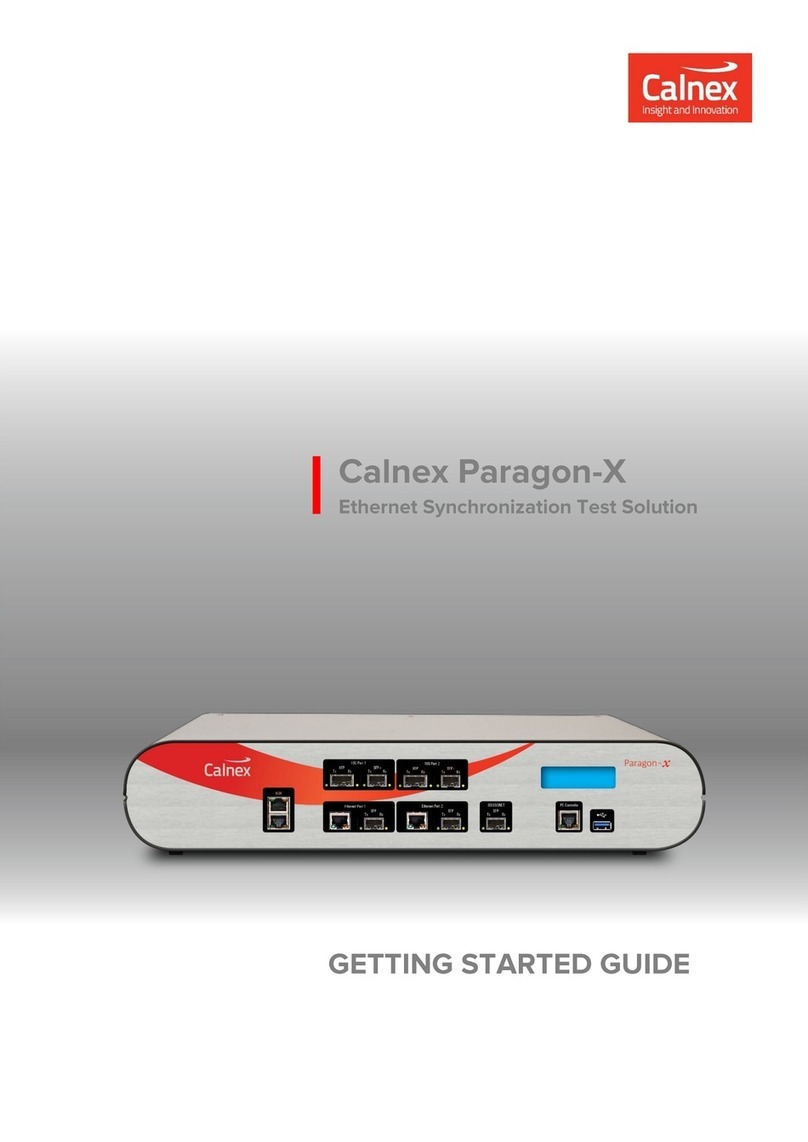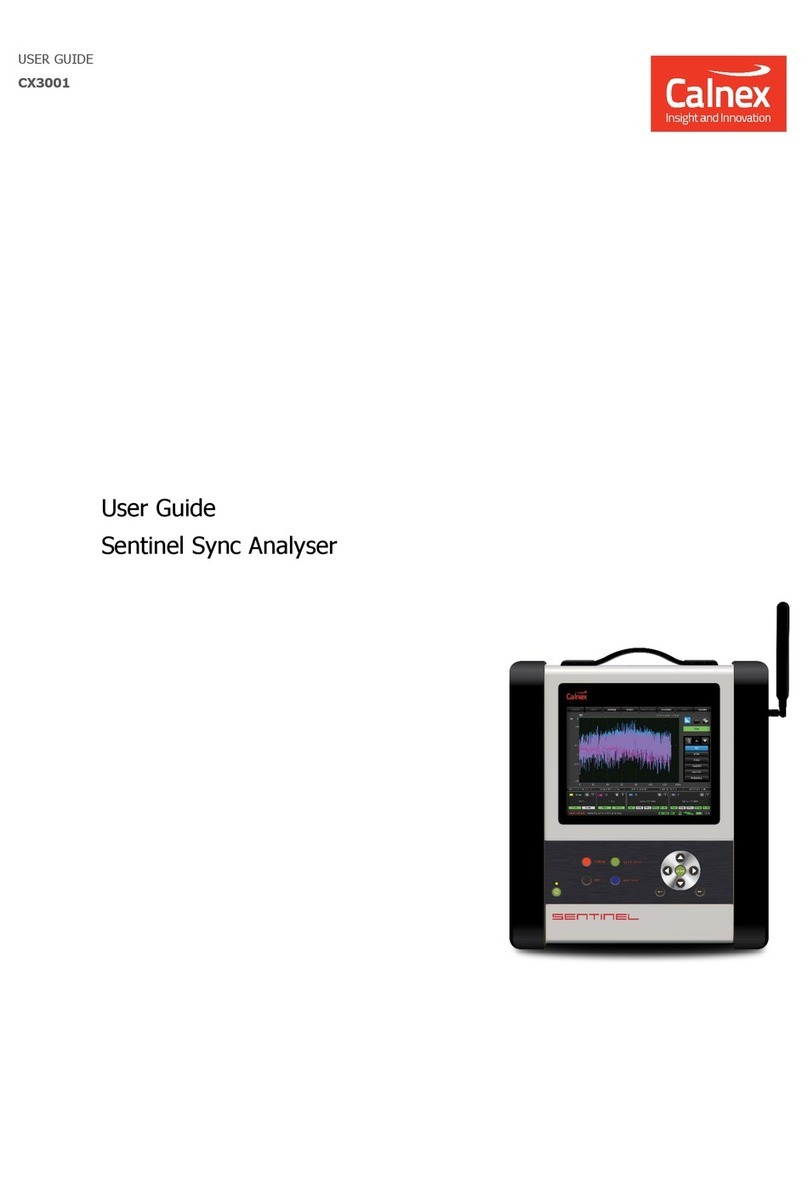Page | 4
1Introduction
This guide shows you how to install and operate the Calnex Paragon-neo hardware and navigate the user
interface.
The operational guidance is generic, detailed operational steps for specific test scenarios and results
interpretation can be found in the Calnex Test Guides and Software Release Notes available on the instrument.
1.1 Overview
Calnex Paragon-neo provides direct insight into the performance of high-accuracy timing signals at interfaces up to
400GbE, and the ability to generate real-world scenarios to validate the operation and behavior of network
devices.
This guide describes all versions of the instrument: Paragon-neo first generation, Paragon-neo second generation,
Paragon-neo R and Paragon-neo PAM4.
Paragon-neo functions (with appropriate options installed):
•Ethernet interface rates of –
-NRZ ports: 100M, 1GbE, 10GbE, 25GbE, 40GbE, 50GbE and 100GbE.
-PAM4 ports: 50GbE, 100GbE, 200GbE and 400GbE.
•PTP timeTransmitter/timeReceiver emulation, impairments, and time error measurements to ITU-T G.826x and
G.827x standards, including Class-C, Class-D and other Enhanced Timing devices.
•PTP and Time of Day message decode and analysis.
•SyncE wander tolerance, transfer and generation testing to ITU-T G.8262.1 and G.8262.
•SyncE jitter tolerance and generation testing to ITU-T G.8262.1 and G.8262. Jitter testing available only on NRZ
interfaces.
•ESMC message generation and measurement to ITU-T G.8264.
•1PPS/ToD generation and measurement.
•Background traffic generation.
1.2 Terminology
This document uses the following definitions:
•Paragon-neo –a general description applying to both Paragon-neo NRZ and Paragon-neo PAM4 instruments.
•Paragon-neo NRZ –an item or description specific to the Paragon-neo NRZ first or second generation
instrument.
•Paragon-neo R –an item or description specific to the Paragon-neo R instrument.
•Paragon-neo PAM4 –an item or description specific to the Paragon-neo PAM4 instrument.






























